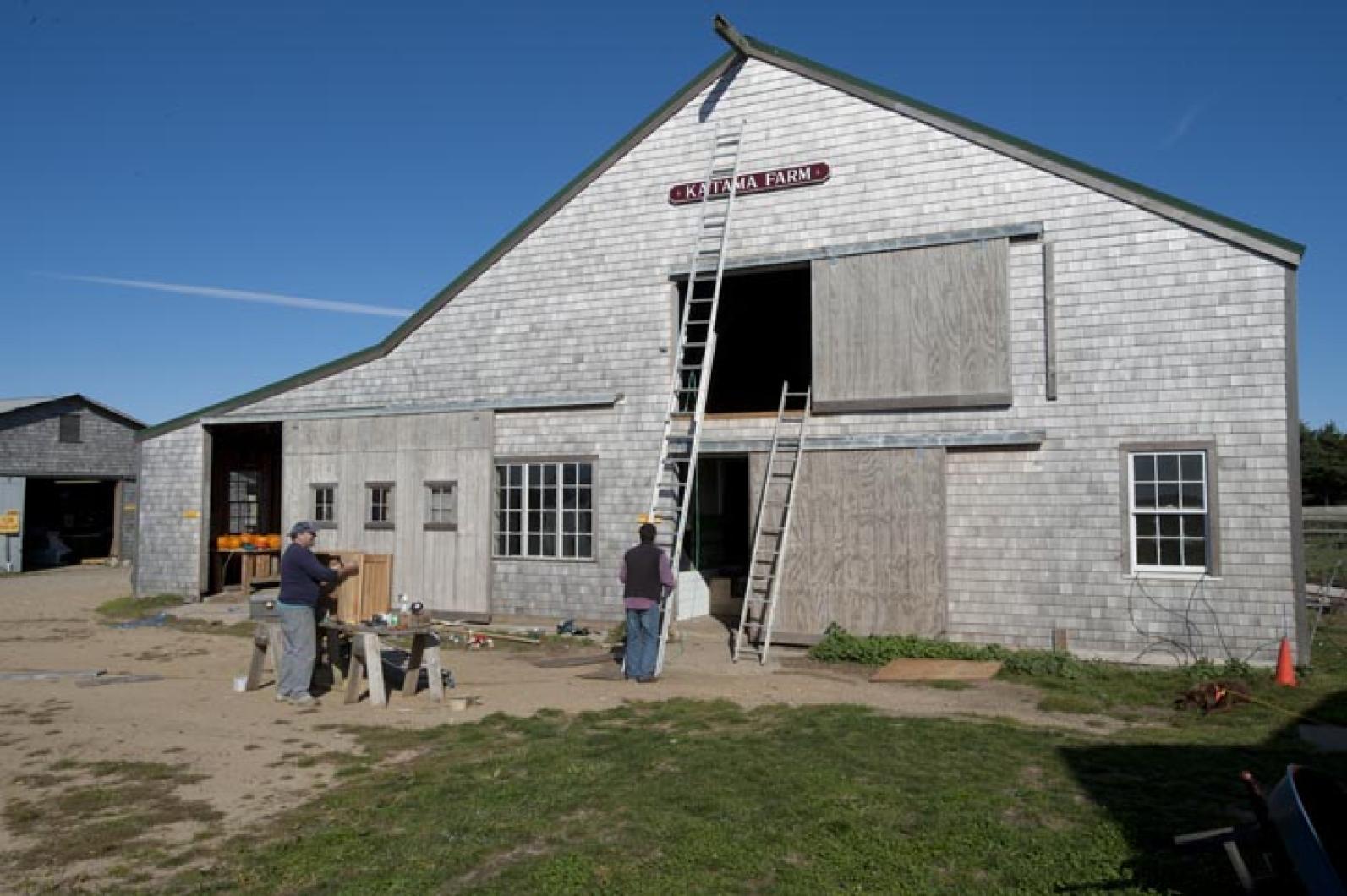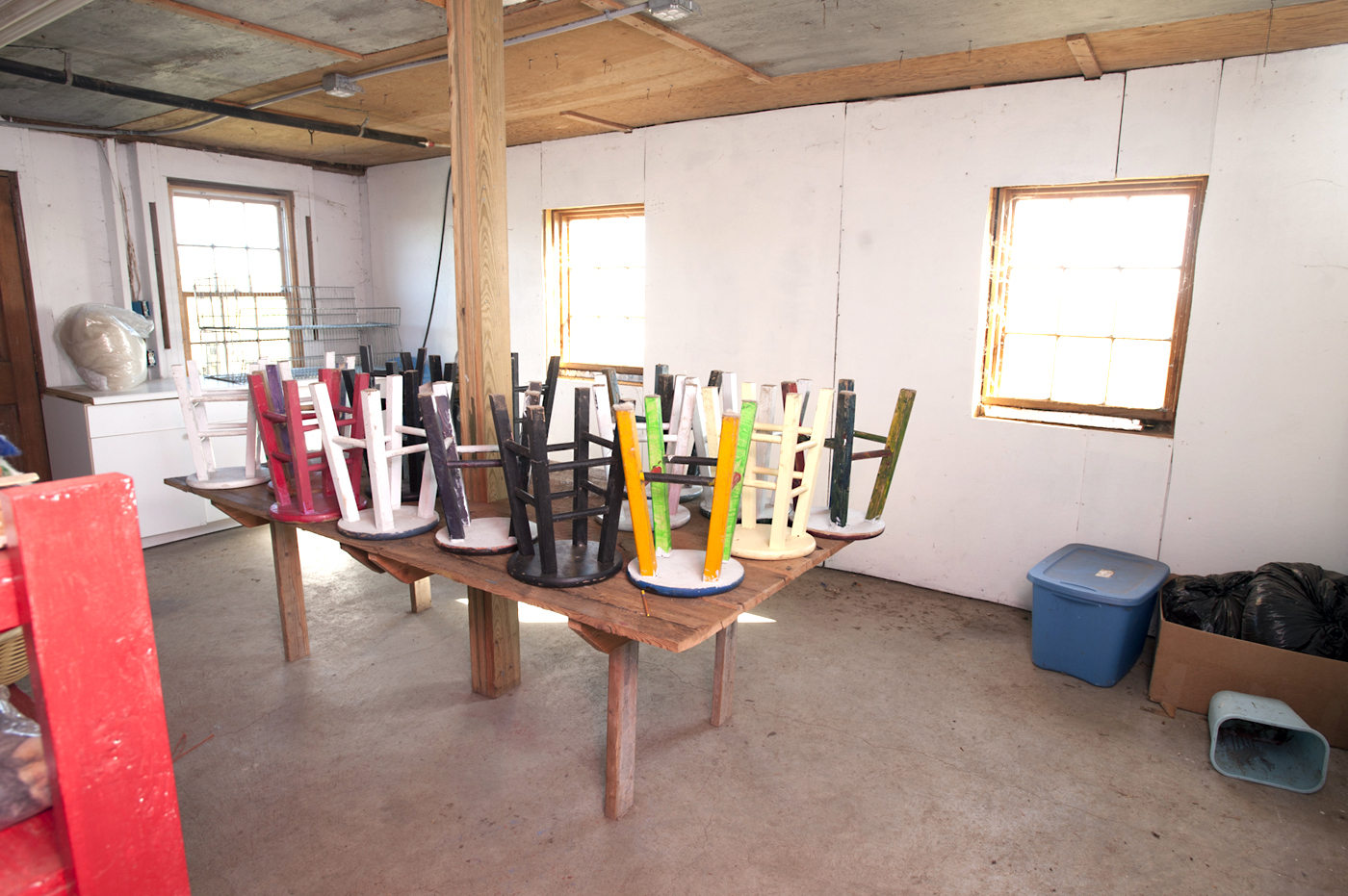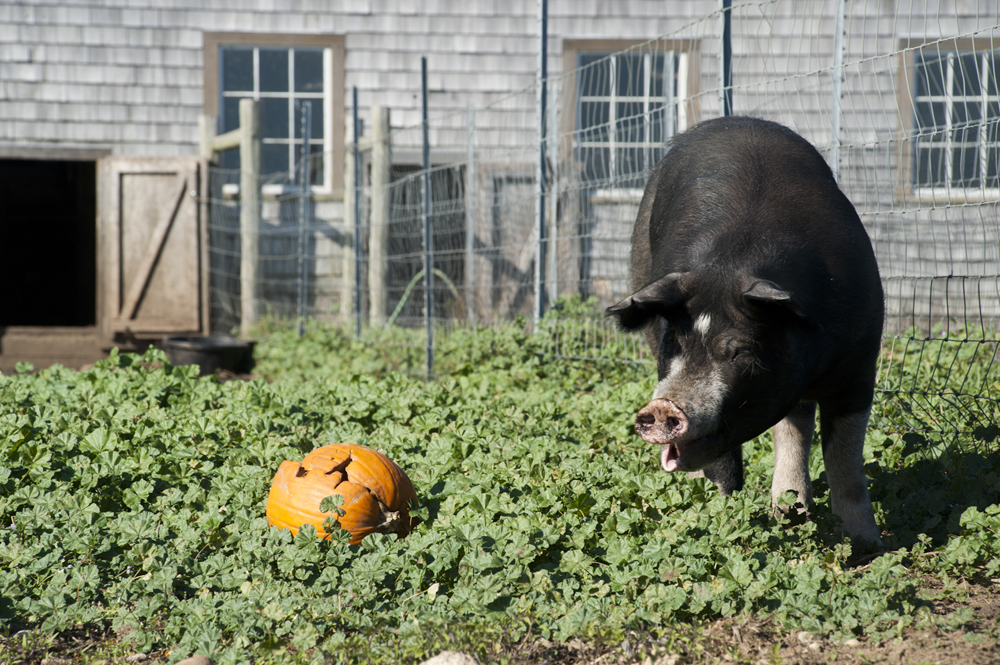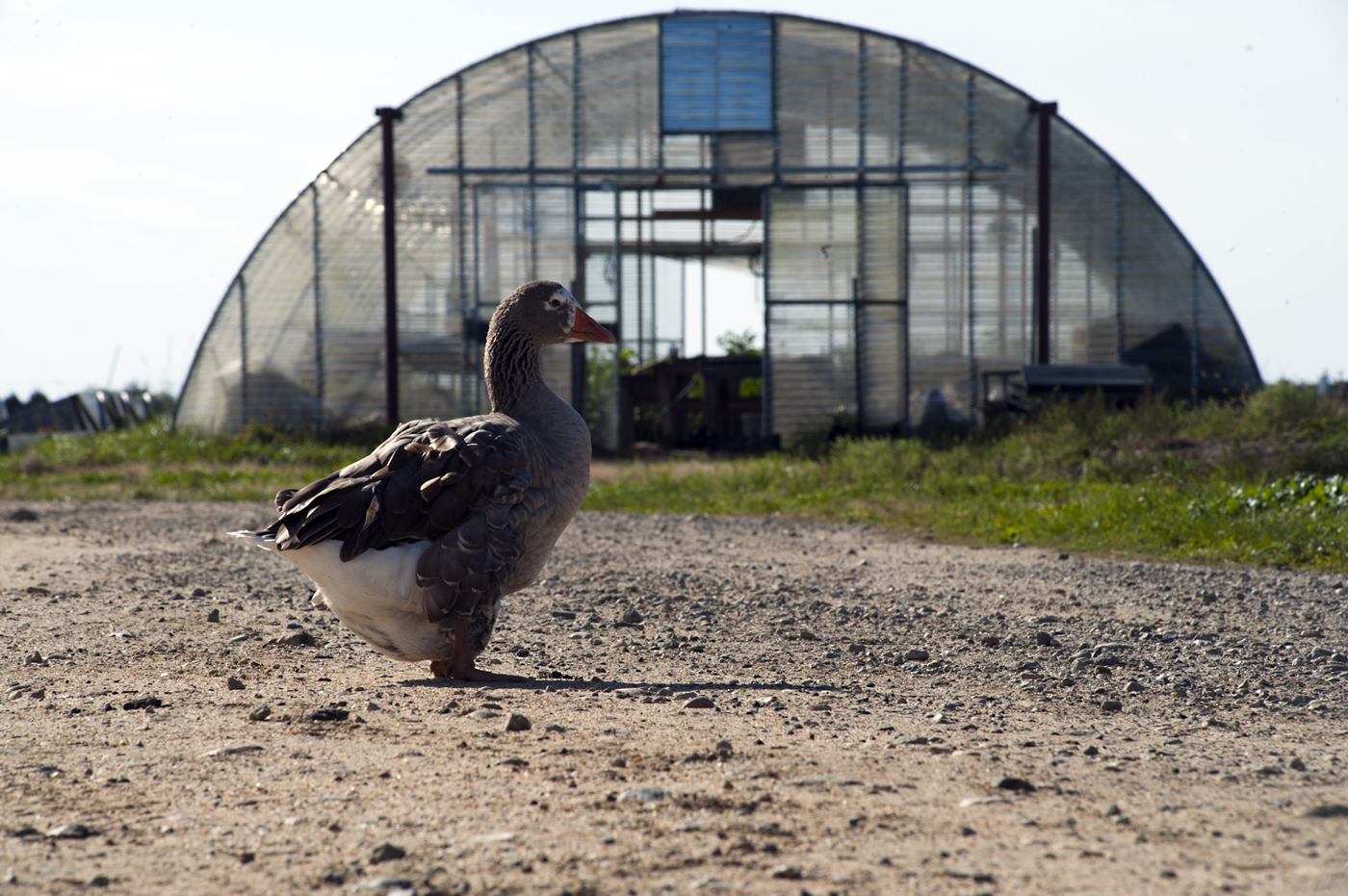Driving down the dirt path leading to the Farm Institute in Katama, a sign urges you to slow down: “Caution, children exploring.” There are the belted Galloway cows grazing in the distance, bales of wrapped hay in the far field, and now there is a fully restored barn to complete the picturesque vista.
The Katama barn has seen dairy farmers, horses, pigs and even illegally housed tenants in its history dating back to the 1930s. But after five years of a stop-and-go restoration project under the leadership of the Farm Institute, the barn has returned to its former glory.
“The Katama barn looks like it was intended to look, and it’s restored to the historical look we all hoped for,” institute executive director Jon Previant said yesterday. “It illustrates our continuing commitment to this Island and the community.
“It serves as an educational space and a barn,” he added. “We’re really pleased.”
It all began with repainting the sign that hangs above the barn’s doors, and now the windows and roof have been replaced, the exterior walls reshingled and the cupolas restored. It may not seem like much, but compared to what the barn looked like when the institute took over the property in 2005, the new barn seems like a fairy tale for all involved.
“It’s an exciting moment to see the barn come back to original condition,” institute board member and former director Bill Connolly said earlier this week. “It was in a virtual state of collapse until [the institute] came along It’s quite remarkable that [the institute] was able to completely redo it. It started out first to shore up footings and timbers which were in state of disrepair; there was a thought the barn might have to be condemned.”
In a 2003 article in the Gazette, the barn was described as covered in mildew, with mattresses strewn about, and floors greasy with condensation. Over the years, the institute has reclaimed the barn bit by bit, and now it is home to a classroom, a fiber projects room and a large workshop area. And yes, the cows, pigs and chickens are happy about their renovated space as well.
“Throughout the year the barn is used for classroom space and livestock,” development director Cathy Verost said on a tour of the new barn earlier this week. “When we give [farm] tours, the community comes here, they walk through the barn. That’s where they can see the animals, where the kids begin chore time in the morning. It’s the hub of a lot of different things.”
The barn has withstood hurricanes, two dairy farms, livestock and has been in various states of disrepair since it was built. When the institute took over the property in 2005, they renovated it enough to make it usable for programs.
But usable enough wasn’t adequate for the plans the Farm Institute had in store. The biggest challenge was getting the money to complete the restoration, not to mention a storm last winter that made it close to impossible to install the new roof. But once the funding came in, the potential of the barn could be met.
With help from the Edgartown board of selectmen, conservation commission, Vineyard Conservation Society, $140,000 from the 1772 Foundation and $80,000 in Community Preservation Act money, the 70-year-old barn has a new lease on life.
“It really affords us the combination of creating an educational facility,” Mr. Connolly said. “The thing that’s not fully recognized is the combined efforts. The Vineyard is very conservation and environmentally conscious and motivated. You won’t find a lot of examples with that combination of all those entities coming together.”
“We’re very big in Edgartown on historic preservation, and this is as good an example of that as any in Edgartown,” he added.
With the new barn comes new opportunities, such as a commercial kitchen in the workshop area to expand culinary programs, available for community use.
“This barn is a multiuse hub of the Farm Institute and really important to have,” Ms. Verost said in the workshop area, passing by a mural one of the visiting residential groups had completed this summer. “Now it’s in amazing condition and it’s going to last another 70 years. It’s incredible.”
The classrooms were empty as a cool fall breeze swept through the stalls of the barn while the Gazette visited the farm, but come summer they will be buzzing with eager young farmers. For now, the pigs let themselves in and out of their stall doors to the grazing pasture next to the barn, and farm workers finished a morning’s worth of chores.
“It’s the next big step for us growing as an education institution,” Ms. Verost said. “We want to be a destination for people on the Island and people who come to visit. They come here and see workers and see the history. We want them to get immersed in it like we have.”










Comments (2)
Comments
Comment policy »